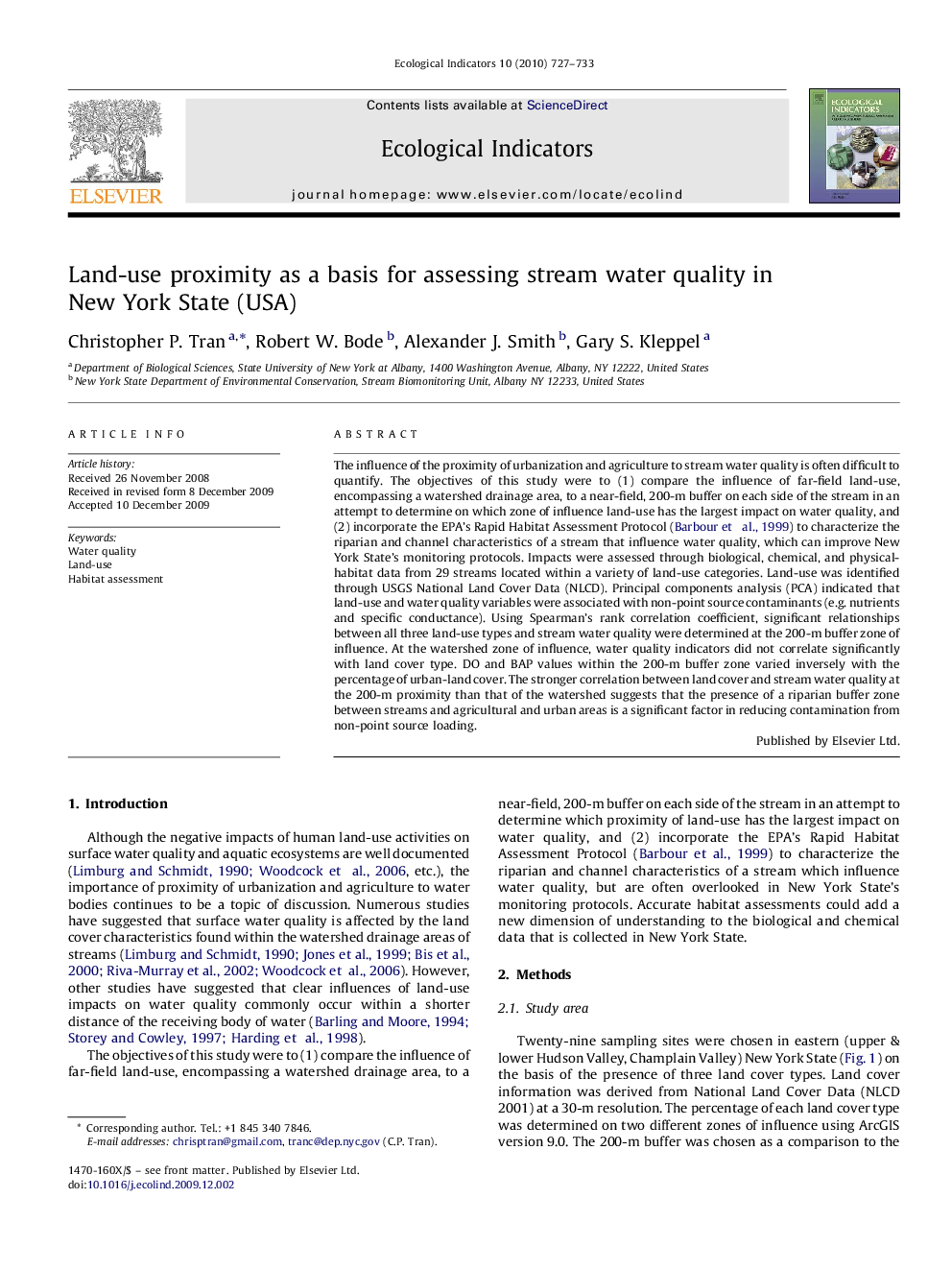| Article ID | Journal | Published Year | Pages | File Type |
|---|---|---|---|---|
| 4374215 | Ecological Indicators | 2010 | 7 Pages |
The influence of the proximity of urbanization and agriculture to stream water quality is often difficult to quantify. The objectives of this study were to (1) compare the influence of far-field land-use, encompassing a watershed drainage area, to a near-field, 200-m buffer on each side of the stream in an attempt to determine on which zone of influence land-use has the largest impact on water quality, and (2) incorporate the EPA's Rapid Habitat Assessment Protocol (Barbour et al., 1999) to characterize the riparian and channel characteristics of a stream that influence water quality, which can improve New York State's monitoring protocols. Impacts were assessed through biological, chemical, and physical-habitat data from 29 streams located within a variety of land-use categories. Land-use was identified through USGS National Land Cover Data (NLCD). Principal components analysis (PCA) indicated that land-use and water quality variables were associated with non-point source contaminants (e.g. nutrients and specific conductance). Using Spearman's rank correlation coefficient, significant relationships between all three land-use types and stream water quality were determined at the 200-m buffer zone of influence. At the watershed zone of influence, water quality indicators did not correlate significantly with land cover type. DO and BAP values within the 200-m buffer zone varied inversely with the percentage of urban-land cover. The stronger correlation between land cover and stream water quality at the 200-m proximity than that of the watershed suggests that the presence of a riparian buffer zone between streams and agricultural and urban areas is a significant factor in reducing contamination from non-point source loading.
